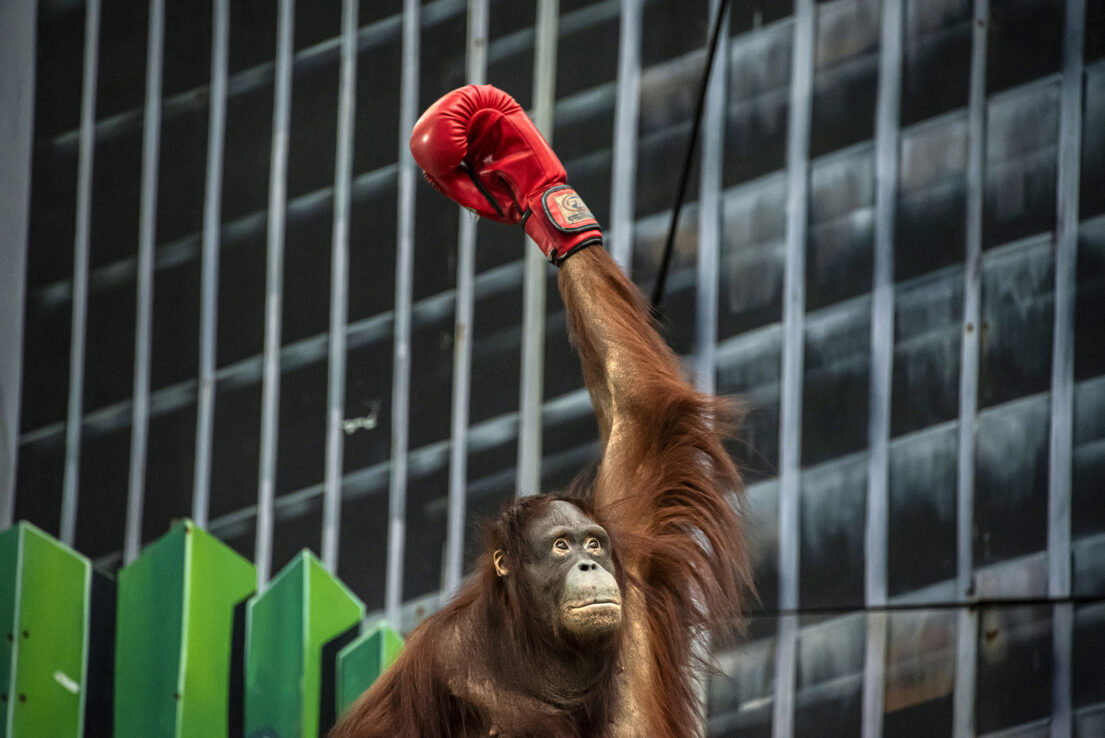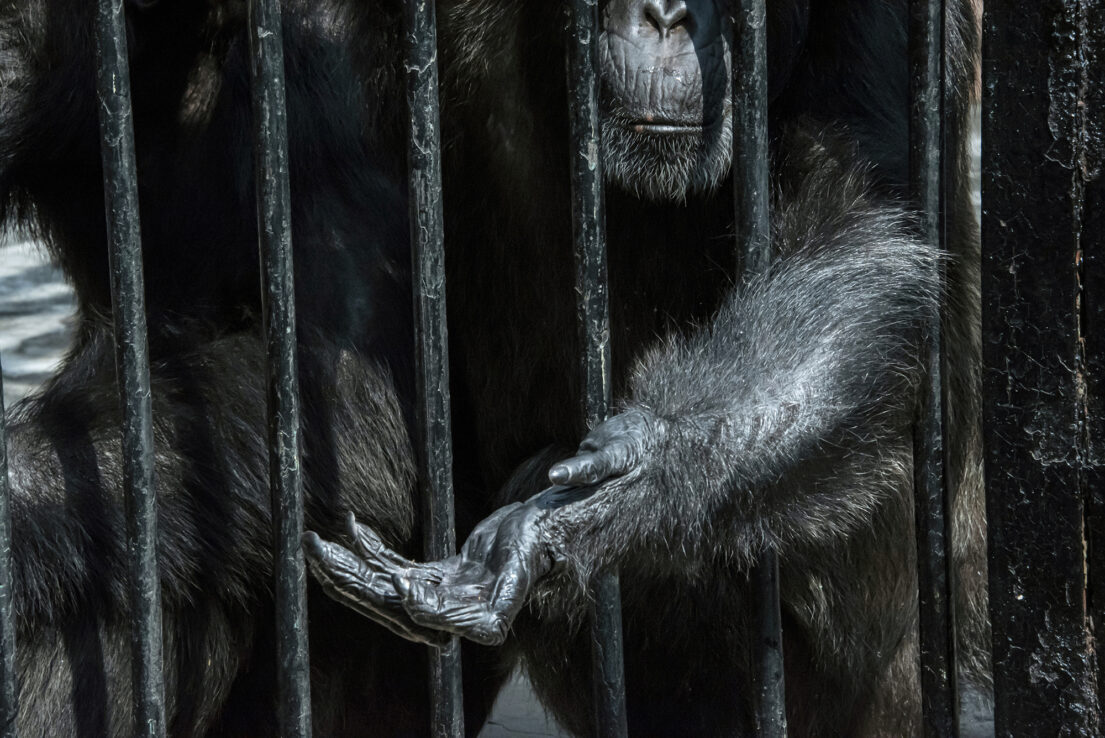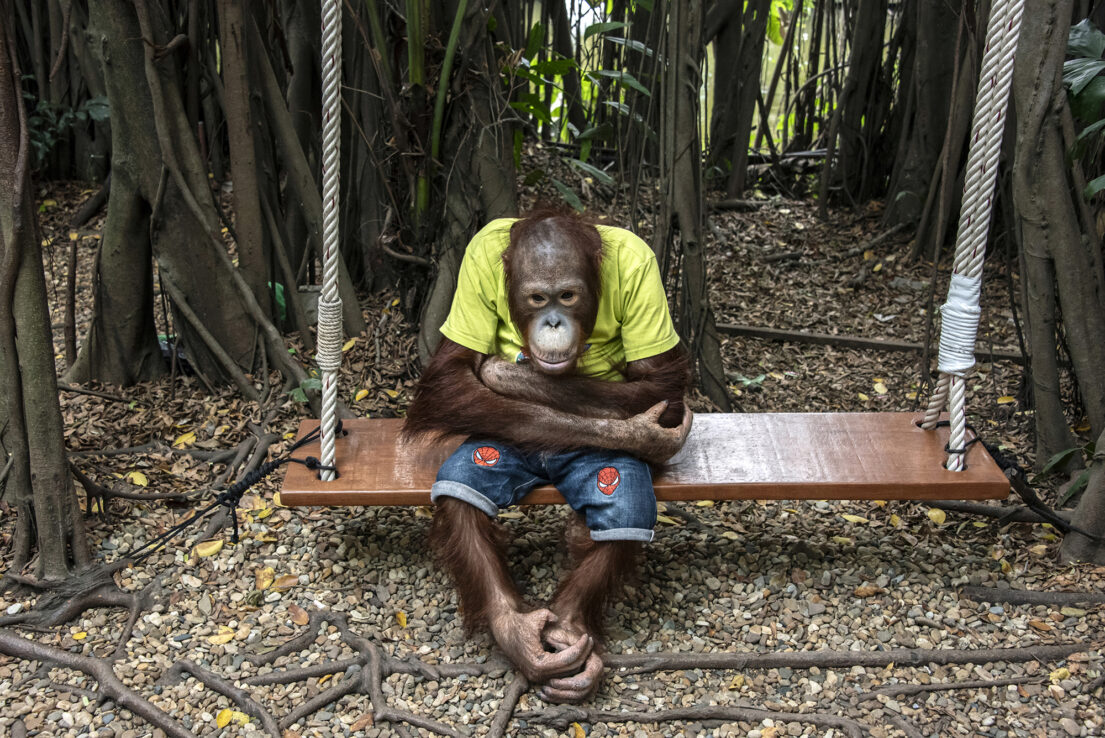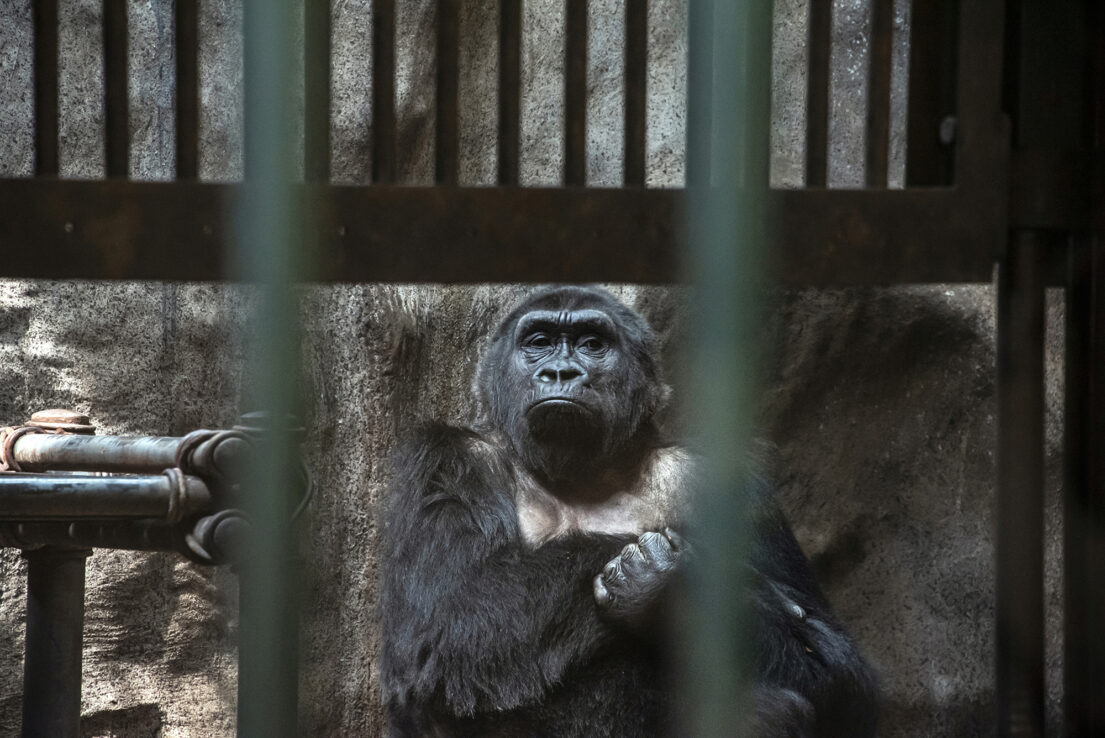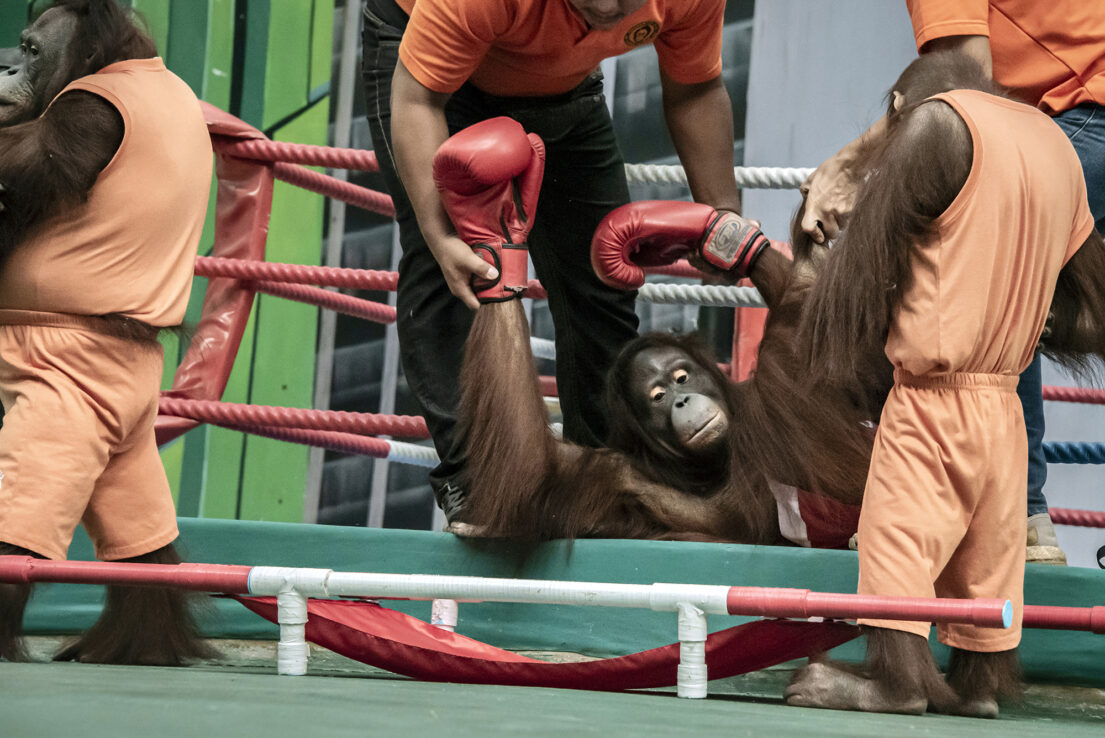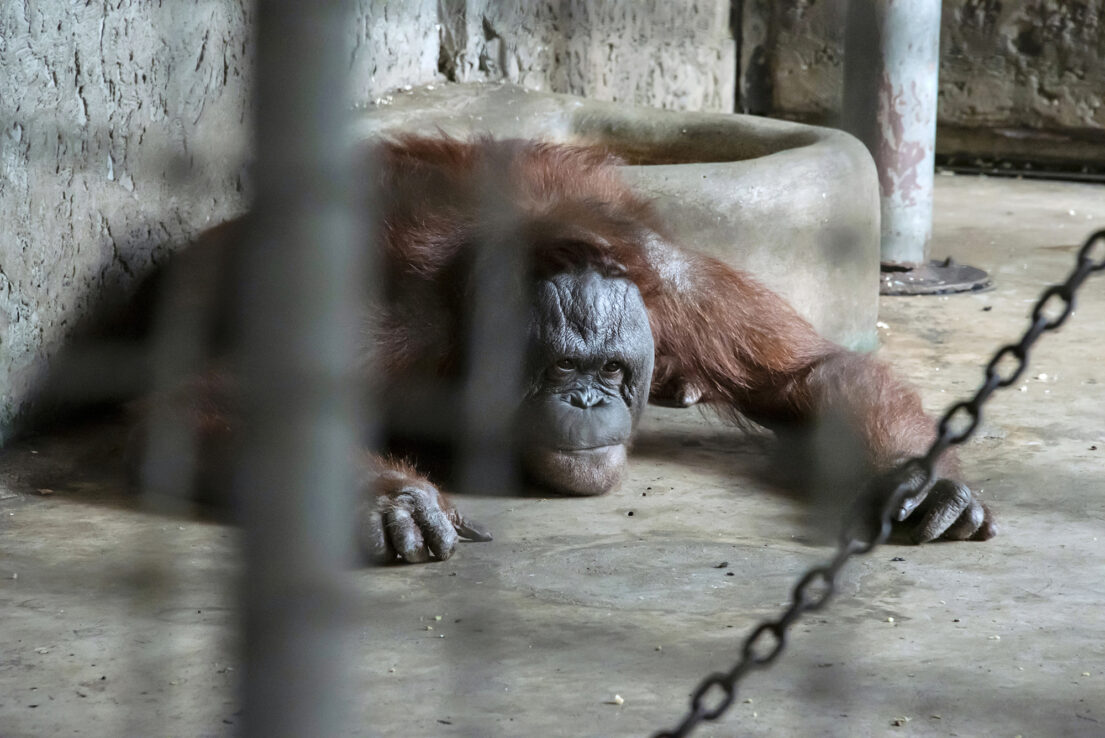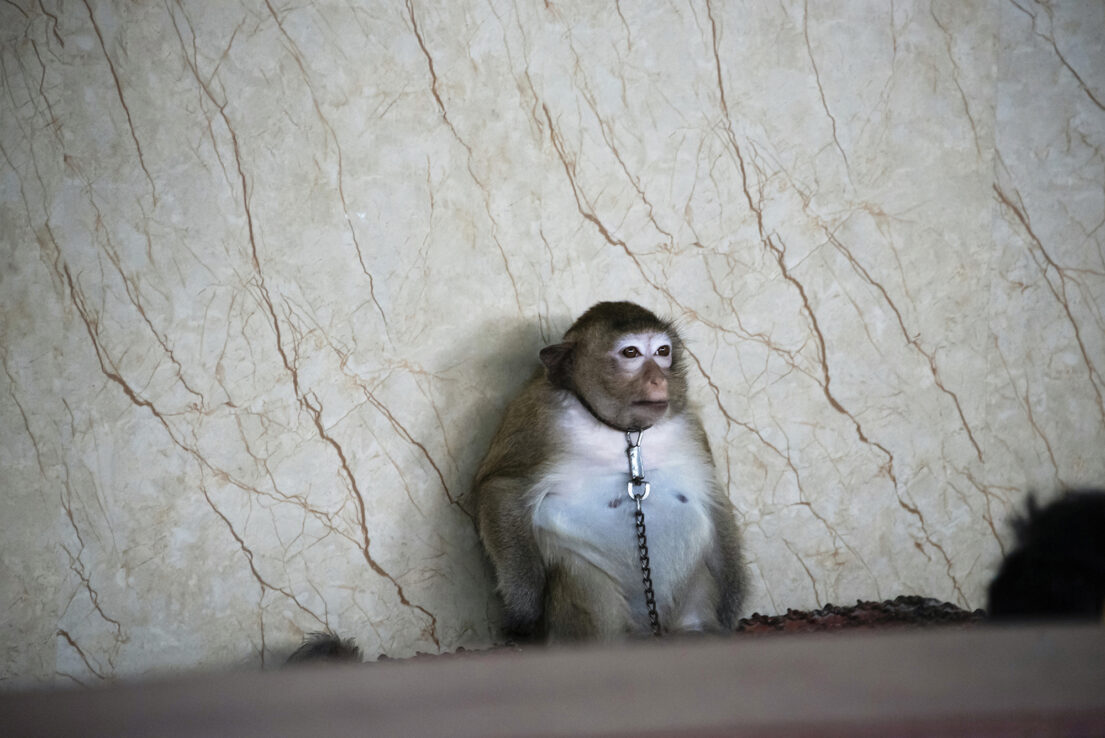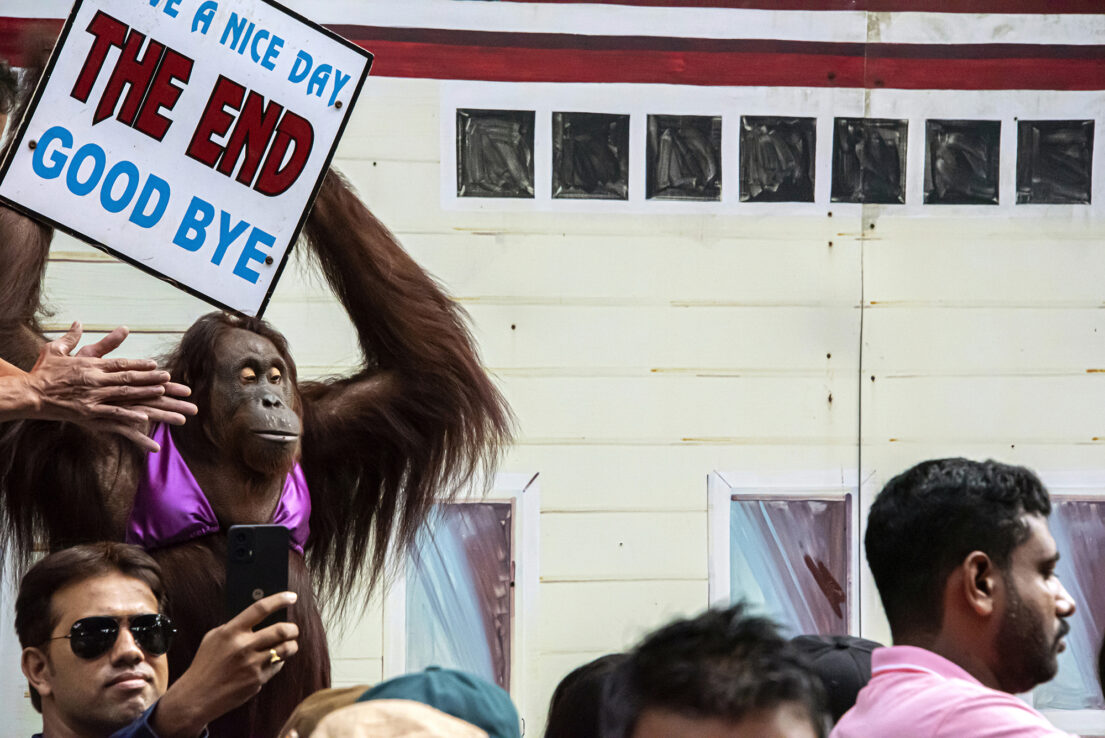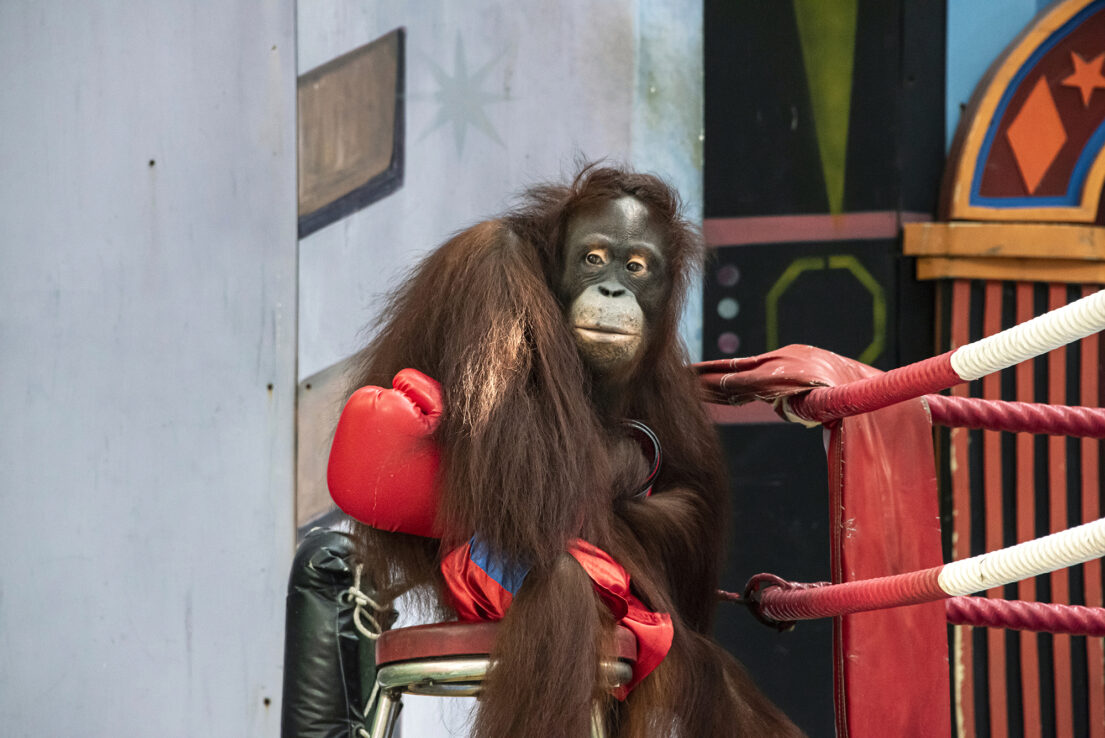Trapped for Entertainment
Wildlife tourism is often marketed as harmless fun or cultural experience. Photographed in various tourist locations across Thailand, this series documents the exploitation of primates under the guise of human entertainment.
Primates are intelligent and social animals naturally living in complex family groups. In many cases, they are taken from their mothers at an early age, often through illegal trade and kept in isolation. Trainers try to humanise these captive animals – dressing them up, making them perform through fear and punishment, turning them into props. What tourists perceive as entertainment is, in reality, a situation of suffering and deprivation for the animals involved.
Wildlife tourism thrives on ignorance and demand. Ending it requires more than exposing abuse – it demands a cultural shift in how we see animals and stronger protections against exploitation. Sanctuaries can offer safety, but often too late; years of captivity leave psychological damage that makes release impossible.
